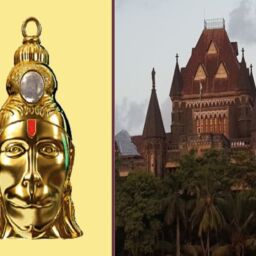“I ask no favour for my sex. All I ask of our brethren is that they take their feet off our necks.”
–Justice Ruth Bader Ginsburg
INTRODUCTION
It is a common sociological phenomenon that affirmative actions are always needed for the marginalised sections of the society, upon further studies we find that children, the poor and women are from those sections which need upliftment. From the establishment of the Indian Army in 1895 and upon gaining statutory identity in 1950, women were not eligible for Permanent Commission at par with their male counterparts. In the recent landmark judgement[1] of Babita Puniya, the Hon’ble Supreme Court granted Permanent Commission to women in non-combat roles.
FURTHER INSIGHTS
Before dwelling into the further technicalities of the issue, it is relevant to mention here that Section 12 of the Army Act, 1950[2] has a mention of ‘ineligibility of females for enrolment or employment. However, ineligibility is up to the extent and except, the Central Government allows. Union Government however by a notification in 1992 allowed women to join certain cadres such as Short Service Commissions (SSC).
In 2003, an advocate- Babita Puniya, filed a writ petition for granting Permanent Commission to women in the army. After the judgement given by the Delhi High court, the same was challenged upon in the Supreme Court by the Union of India. The Supreme Court in its landmark verdict in the year 2020, entitled that not inducting women officers in permanent commission is a sheer case of discrimination and a crystal clear violation of Article 14[3] of the Indian Constitution.[4] However, the judgement also stated that Article 33 has provisions for the check on armed forces but those restrictions are for corroborating proper discipline and performance of duty.[5] Consequently, after listening to both sides of the suit, the Hon’ble Supreme Court made an order to grant Permanent Commission to women and affirmed that necessary steps for the compliance of the judgement should be taken upon.[6]
The battle doesn’t halt here, it can be observed that women face a tinch of discrimination even after affirmative court verdicts. There was another judgement delivered in the year 2021. In the case of Lt. Col. Nitisha v. Union of India[7], it was observed that the selection procedure for granting permanent commission to women was superfluous and was indirectly discriminating. The petitioner made the argument that women were made to comply with SHAPE criteria. The dichotomy which evolves here is that the same SHAPE criteria were to be fulfilled by the male counterparts in the initial years of their services. But the women officers need to comply with the SHAPE criteria after the Babita Puniya Case. Hence, women were made to comply with such criteria at an advanced age as compared to their male counterparts.[8] The court said that the ultimate goal of the court was not to achieve fabricated equality. Hence, the court ordered that those women who were denied Permanent Commission because of non-compliance with the SHAPE criteria should be granted PC. The SHAPE criteria have been elucidated as hereunder:-
- S- Psychological including cognitive function abnormalities.
- H- Hearing
- A- Appendages
- P-Physical Capacities
- E- Eyesight
STEREOTYPES AND WOMEN IN ARMED FORCES
Even after progressing at such an advanced pace as a nation, Indian society is deeply embedded with gender stereotypes and brutal discrimination against women. It is observed that people consider women at a lower pedestal than men. Women are viewed as solely responsible for the duties towards their children, family and marriage.[9] Such an orthodox mindset reveals the deeply rooted patriarchal nature of our society even after significant years of independence. Such stereotypes suggest that people still view women under the spectacle of their gendered roles in society. This is the reason that there is a dire need for standing up for women and fighting for their equality so that they can come to the higher rung of the ladder where men already are. Such instances reveal that even today women are viewed not at par with males because of the physiological composition of men and women.[10] In fact, this was one of the reasons which were presented before the court so as to not grant Permanent Commission to women. However, the Hon’ble court dismissed such frivolous and abrupt arguments and stated that such perspectives need to be smashed and an urgent need to bring TRUE EQUALITY IN ARMY should be composed. The orientation of our fight is not just to bring an end to the way women are seen but the ultimate goal is to free our society from the gendered roles. So that each male and female be living their life freely without complying with the requirements of the gendered aspects.
CONCLUSION
The decision of the Supreme Court is highly appreciable and this was a major victory which up to the greater extent helped the women to win a battle against gender stereotypes and discrimination. The biological composition of women is viewed as an impediment in fulfilling the duties towards the nation. But this is not the true facade, there are numerous examples in front of us where women and that too Indian women have made our nation proud. Be it Lt. Col. Sophia Qureshi, be it Lt. Col. Anuvandana Jaggi, be it Major Madhumita, be it Major Gopika Ajitsingh Pawar or be it Lt. Bhavna Kasturi, all these women officers have earned accolades and have made India proud at international platforms too.[11]
It is the need of the hour that women be served with equal respect and equal dignity as their male counterparts. Such landmark decisions were much awaited in the history of India and the Hon’ble Supreme Court of India has bridged the gap which was encircling the discrimination being done with women. Such judgement adds to the anti-stereotyping lens to the issue of discrimination. Moreover, Articles 14 and 15[12] were also applied so as to deal with the discrimination issues. However, Article 33 put some restrictions but that too is for ensuring discipline in the armed forces. Now, after receiving help from the judicial system, the responsibility is on women to showcase their talents and to bring accolades to the nation as a whole.
Author(s) Name: Tanvi Ojha (Student, Himanchal Pradesh National Law University, Shimla)
References:
[1] The Secratary, Ministry of Defence v. Babita Puniya and Ors., AIR 2020 SC 1000.
[2] Army Act 1950, s 12.
[3] Constitution of India, 1950, art. 14.
[4] Supra Note 1.
[5] Constitution of India, 1950, art. 33.
[6] Digant Raj Sehgal, The Secratary, Ministry of Defence vs. Babita Puniya and Ors.: A case study, I Pleaders (August 16, 2020), https://blog.ipleaders.in/secretary-ministry-defence-vs-babita-puniya-ors-case-study/.
[7] Lt. Col. Nitisha v. Union of India, AIR 2021 SC 1797.
[8] Unnati Ghia, With women officers in armed forces, SC recognises systematic biases, The Indian Express (March 30, 2021, 4:26 PM), https://indianexpress.com/article/opinion/women-officers-armed-forces-supreme-court-7251465/.
[9] Sushant Kulkarni, Women in armed forces: new strides, miles to go, The Indian Express (September 23, 2020, 8:34 AM), https://indianexpress.com/article/explained/explained-the-role-of-women-in-the-indian-navy-6606065/.
[10] CD Staff, [Burning Issue]: Women in armed forces, Civilsdaily (March 21, 2020), https://www.civilsdaily.com/burning-issue-women-in-armed-forces/.
[11] Sanchari Pal, Marching ahead: 13 incredibly brave women in armed forces who broke the glass ceiling, Better India (January 24, 2017) https://www.thebetterindia.com/83280/brave-women-soldiers-indian-armed-forces/.
[12] Constitution of India, 1950, art. 15.
















